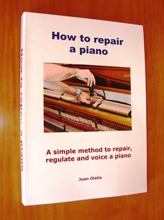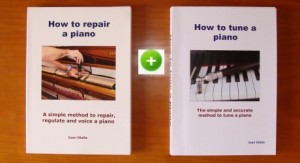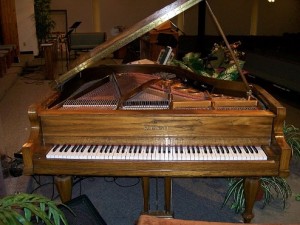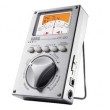 Learn to repair, regulate and voice pianos the professional way. This book “How to repair a piano” will be a great asset for beginers and/or advance students who also want to repair as well as tune their own piano.
Learn to repair, regulate and voice pianos the professional way. This book “How to repair a piano” will be a great asset for beginers and/or advance students who also want to repair as well as tune their own piano.
Save lots of money in expensive repairs, and learn a skill that you can use to repair and service other people pianos. In addition, “How to repair a piano” will teach you not only to do repairs, but also so important aspects of the piano as regulation and voicing.
This book is the product of so many years of work. The techniques and methods exposed in this method are based on my own experience working as a piano technician for the last 32 years. As you will discover in this book, most malfunctions on the piano are easier to mend than they look at first sight so, why not to do it yourself. Learn the “tricks of the trade” and repair pianos in no time, I’ll show you how.
“How to repair a piano” Buy and download Now!
“How to repair a piano” main Features:
- 132 pages divides into 7 Chapters comvering all the important issues
- More than 140 pictures and helpful diagrams
- Numerous tips and first hand advices
- Full dedicated chapters covering regulation and voicing
- A check list for quick reference with the piano most common failures
Table of Contents
Chapter I: How the action works
Grand piano main sections
Note on cross sections nomenclature
Grand piano cabinet nomenclature
Grand piano action cross section
Upright piano action cross section
Operation of the upright action
Upright wippen assembly
Upright action operation in four phases
How the grand piano action works
Grand piano wippen assembly
Grand piano operation in five phases
Chapter II: The hammers, common faults and how to repair them
Basic tools
The virtues of “hot glue”
Repairing hammers and shanks
Changing a whole set of hammers
Modus operandi
Repairing a broken hammer shank
Flanges and bushings
Repairing a flange
Sluggish action parts
Repairing broken or damage bridle straps
Final notes and recommendations
Chapter III: The piano strings
Basic tools
Bass strings
Middle and treble section steel strings
Piano wire size number
Procedure to replace a string
Restringing a piano
Chapter IV: The pins and the pinblock
Pinblock cross section
Pianos that don’t stay in tune
How to repair a loose pin
Pinblock tightener
Chapter V: The keyboard, the keys
Most common fault
Determine where is the problem
Fixing a sluggish or sticking key
Keys rubbing on the key slip, a classic
Replacing the key bushings
Repairing a broken key
Chapter VI: Regulating
Understanding regulation
Regulation tools
Basic preparations
Regulating the upright piano
General alignment and squaring
Check and align the travel of the hammer butt
Check and align the hammers to the strings
Check and align the jacks to the hammers
Aligning the backcheck
Regulate hammer stroke
Regulate lost motion
Regulate the average key height
Regulate hammer let-off
Regulate key dip
Regulate hammer checking
Regulate the pedals
Regulate the dampers
Regulate the damper spoons
Regulate the bridle straps
Final note on regulating the upright piano
Regulating the grand piano
The let-off regulation rack
Basic preparations
Spacing and levelling the keys
Regulate the travel of hammers
Align hammers to strings
Regulate the jack to the hammer roller
Adjust the height of the repetition lever
Regulate the hammer height
Regulate the hammer let-off
Regulate the hammer drop
Regulate the backchecks
Regulate the repetition lever spring
Regulate the dampers
Adjust the height of the damper stop rail
The grand piano pedals
Regulating the grand pedals
Chapter VII: Voicing
Understanding piano voicing
Voicing tools
The voicing technique
Voicing procedure
Voicing for “strong”
Voicing for “soft
Comprehensive hammer voicing
Voicing the last treble octave
Final notes on voicing
Action problems summary quick reference
Note is too weak
Note doesn’t sound at all (dead key)
Hammer strikes the strings two or more times
Hammer gets blocked against the strings
Sluggish and “lazy” notes
Notes “clicking” noise
Dampers unable to damp
Buy the two eBooks Now and save a 15% - Instant download!
 $50,92 USD $50,92 USD |
Copyright © Juan Olalla 2011







